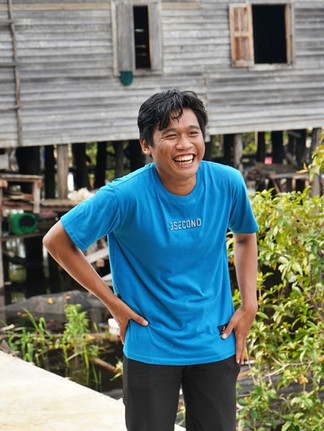When Young Voices Write the Story of the Forest: Writing Competition at the Gerbang Barito REDD+ Project
- Wildlife Works
- 24 minutes ago
- 3 min read
Written by Tamara Anisa, Wildlife Works Indonesia Communications Specialist
How do people in villages protect forests, aside from their daily physical conservation efforts? The answer is through words.

Communicating through Writing
The Gerbang Barito REDD+ Project places community members at the center of forest stewardship and natural resource management. Yet their voices, especially women and youth, are rarely heard in the public narrative. Through the “Akar dan Kata” (Roots and Words) writing competition, Wildlife Works created an inclusive space to document lived experiences, customary knowledge, and people’s relationships with nature. These stories not only enrich the project’s communications, but they also strengthen community ownership of the REDD+ initiative.
To nurture this enthusiasm, Wildlife Works Indonesia held a two-day writing workshop on August 23–24, 2025. The training provided technical skills and creative encouragement for participants to voice their realities, values, and aspirations. Using a participatory approach, the workshop supported community members to become authentic storytellers, with narratives of forest protection that grow directly from the grassroots.
Voices from the Villages
Twenty-nine people from Batilap and Batampang joined the competition, ages ranging from 15 to 56. Most were youth, bringing fresh energy into storytelling. Ten winners were then invited to the workshop, not just for recognition but to spark new opportunities for expression and growth.
Normilla, 19, from Simpang Telo in Batampang, said writing allowed her to explore a hidden passion. “I love reading novels, and that inspired me to write stories about nature,” she explained. Her cousin, Ayu Dya Nabila, 16, felt differently. “Through this workshop I learned public speaking. I was shy, but I want to be able to speak in front of many people.” For both, the experience was not only about writing, it was about gaining courage and confidence.
Beni from Batilap shared a different reflection. “For me, the challenge was organizing the story so it’s easy for readers to understand. After the training, I understand how to build paragraphs and use punctuation properly.” What stayed with him most was the sense of connection. “I made many new friends and gained new experiences. I hope trainings like this continue.”
As another example, Mulia, 15, from Batampang, came from a unique background. It was her first time meeting people from outside her village. “I felt shy and nervous when asked to come forward,” she said. Despite her shyness, she carries a big dream. “English is my favorite subject. I’m also learning Mandarin through the internet because I hope to work in China one day.” By the second day, Mulia was more relaxed and happy to interact with other participants. “The workshop helped me connect with friends from Batilap.”

The workshop also invited participants to face the craft of writing itself. Normilla attempted to craft factual stories from childhood memories of the forest, asking her to recall details with care. “Remembering all the details was the hardest part. But I learned a lot from it.” Nabila added, “It took several days, and I had to revisit old memories. But it made me want to continue writing and improve my skills.”
Writing to Protect Forests
For participants, writing was more than an exercise on paper. Words became witnesses, legacies, and drivers of change. From childhood stories and daily life in the village to reflections on forests, each piece of writing became another way to care for nature. Community-led conservation is not only about action in the field. It is also about communities telling their own stories. Through writing, whether on paper, laptops, or phones, community members become stewards of their narratives, ensuring their voices are never lost.
Looking Ahead
The competition and workshop are just the beginning. Wildlife Works plans to continue with a second phase of training, building a budding ecosystem of village storytellers. The hope is that participants will keep writing long after the competition, sharing stories about forests, their villages, and the lives they lead.
Across the vast forests of Kalimantan, young voices are beginning to emerge. They write not just to win but to help ensure their forests and their stories endure.














